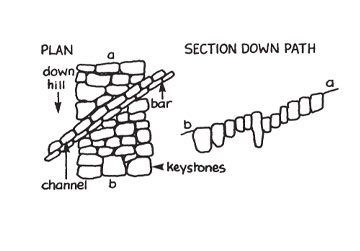Learn to design, construct, maintain and repair rural footpaths and informal paths in urban areas
This handbook is for conservation volunteers and path workers who are involved in the design, construction, maintenance and repair of footpaths.
It contains everything you need to know about path work – the history of paths and tracks, the law, how to design a path, construct a path, deal with drainage and what surfacing to choose.
The handbooks goes into further detail about path features, like boardwalks, bridges, steps, stiles and gates, as well as how to deal with erosion and vegetation.
What to expect
Footpath subjects
Background info
Loads of background information – path history, their use and the law, surveying, design, tools and equipment, as well as health and safety.
Constructing a footpath
Clear, fully illustrated, step-by-step instructions on all aspects of creating a footpath – path clearance, drainage, surfacing and much more.
Footpath features
Design and construction of footpath features such as boardwalks, bridges, stiles, steps and gates, waymarking, vegetation restoration and so on.
Footpaths: a practical handbook – chapters
The original, printed TCV handbook “Footpaths, a practical handbook” contained 216 pages. Every one of these pages is included in these digital versions.
What is in the handbooks?
Step by step
All the processes in the handbooks are explained in easy to follow language, using step-by-step guides that are ideal for all levels.
Clearly Illustrated
Over 2,000 helpful illustrations accompany the text, adding clarity.
Comprehensive
The handbooks cover all the topics you need to improve your skills and knowledge.
Definitive
Written by conservation experts, the handbooks are highly valued by users across the conservation sector.




